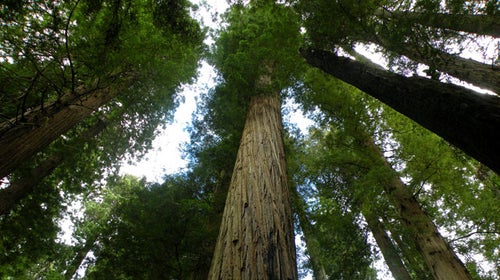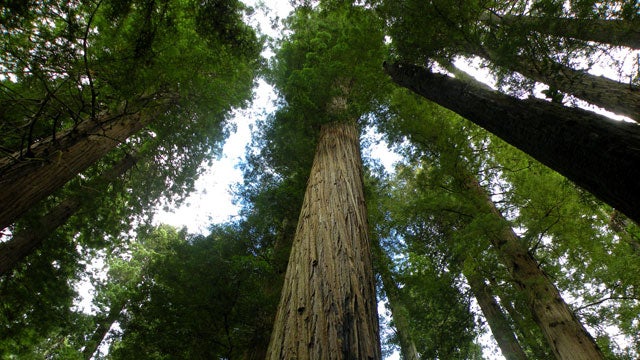The last of the giant, old-growth redwood trees along the California coast have experienced an unprecedented growth spurt in recent years, a study by the Redwoods and Climate Change Initiative revealed Wednesday. Over the past century, the trees produced more wood than over any other period in their lifetime, accelerating in the last few decades after a slowdown in the 1950s and 1960s.
“It shows these trees are being impacted by something in the environment,” Emily Burns, director of science for Save the Redwoods League, the San Francisco nonprofit that is managing the initiative, told the San Francisco Chronicle. “Our hypothesis is that it’s because it is warmer. That lengthens the growth season.”
Researchers believe the changes are due to an increased level of sunshine—as fog became less common along the coast—and carbon dioxide in the atmosphere. While rainfall has kept the forests wet, fog and cloud cover has decreased by 33 percent from the 20th century, according to a 2010 study.
“What we’re seeing is that the redwoods are growing even better as the fog has declined,” Burns said. “It’s fantastic. For me this is a really hopeful story about the redwoods.”
As part of the $3 million study, researchers examined 137 coast redwoods and giant sequoias on 16 plots. Due to their efforts, the tree-ring record can now be traced back to the year 328, extending the record by more than 1,4000 years. (One tree near Crescent City, California, turned out to be 2,520 years old, breaking the previous record by more than 300 years for coast redwoods.)
Ancient redwoods may become a valuable commodity in California’s carbon market because the trees store three times more carbon than other species and trap carbon even after they die.

